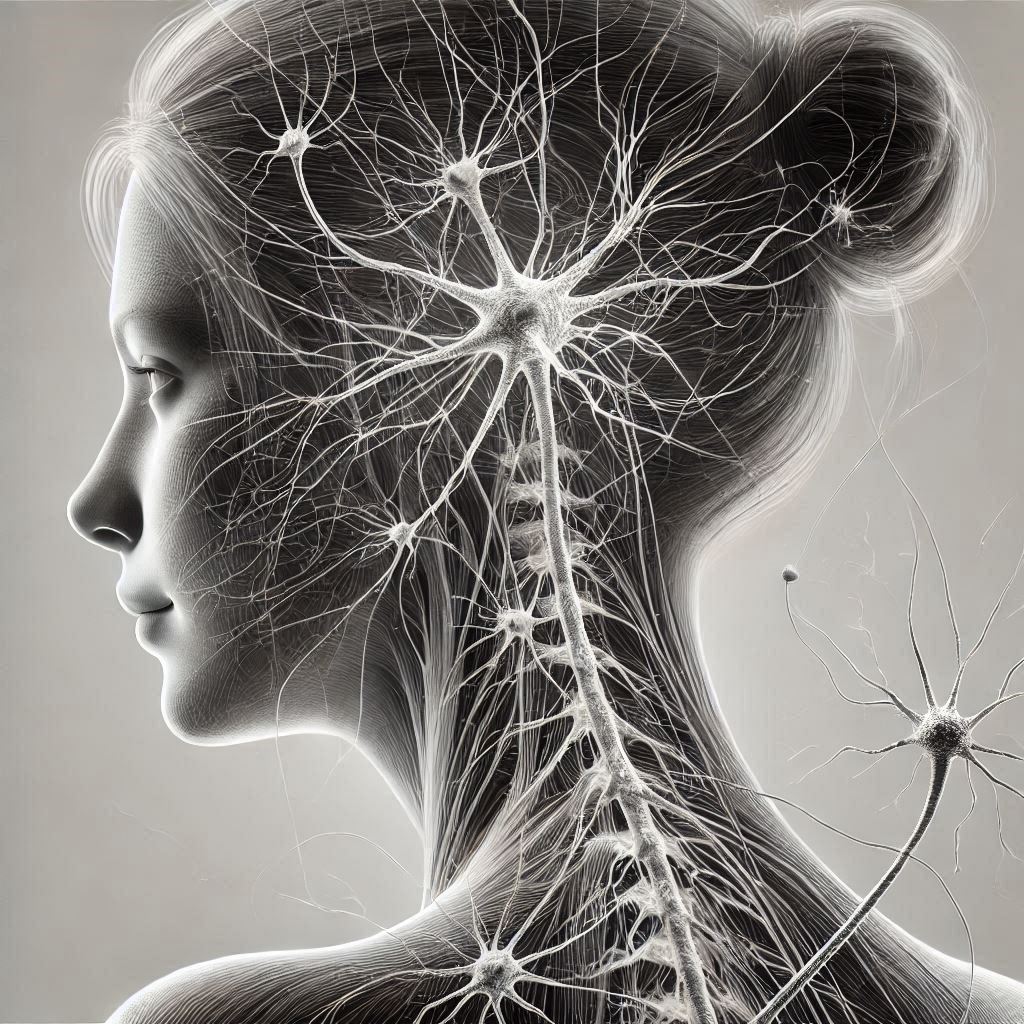Imagine you’re at a crowded event, and suddenly, your heart starts racing, your palms sweat, and you feel an overwhelming sense of doom. You’re not alone—about 11% of people in the U.S. experience panic attacks each year. Understanding the stages of a panic attack can be crucial for managing these episodes effectively.
In this post, we’ll break down the stages of a panic attack, helping you recognize the symptoms as they unfold. From the first sign of anxiety to the peak of fear and the eventual decline, knowing what to expect can empower you to take control. Stay tuned to gain valuable insights that could make all the difference in managing your mental health.
Understanding Panic Attacks
Panic attacks are intense episodes of sudden and overwhelming fear or anxiety that can strike unexpectedly. During a panic attack, individuals may experience a range of physical and emotional symptoms that can be frightening and confusing.
Definition of Panic Attacks
Panic attacks are characterized by a surge of intense fear or discomfort that reaches a peak within minutes. Symptoms can include rapid heart rate, sweating, trembling, shortness of breath, chest pain, nausea, and a sense of impending doom. These episodes can feel like a heart attack or a complete loss of control.
Common Triggers of Panic Attacks
Panic attacks can be triggered by various factors, including stressful life events, such as trauma, major life changes, or ongoing stress. Additionally, phobias, certain medical conditions, excessive caffeine intake, and genetic predispositions can contribute to the onset of panic attacks.
It’s important to note that each individual may have different triggers for panic attacks, and identifying these triggers can help in managing and preventing future episodes. Seeking professional help and developing coping strategies are essential in dealing with panic attacks effectively.
For further information on panic attacks and their triggers, you can refer to reputable sources like the Anxiety and Depression Association of America.
The Four Stages of a Panic Attack
Panic attacks can be overwhelming, but understanding the stages they typically progress through can help individuals navigate and cope with these intense experiences effectively. Here’s a breakdown of the four stages of a panic attack:
Stage 1: Prodromal Stage
In the Prodromal Stage, individuals may start noticing subtle changes in their mood and physical state. Symptoms like irritability, restlessness, and heightened anxiety can signal the onset of a panic attack. This phase serves as an early warning sign, giving individuals a chance to recognize the impending attack and potentially take proactive measures to manage their stress.
Stage 2: Acute Fear Stage
Transitioning into the Acute Fear Stage, individuals experience a sudden surge of panic and fear. Physical symptoms such as rapid heartbeat, shortness of breath, trembling, and sweating become more pronounced. The intensity of fear peaks during this stage, leading to a sense of impending doom or loss of control. Coping strategies like deep breathing exercises or grounding techniques can be beneficial at this point.
Stage 3: Peak of Panic
The Peak of Panic marks the climax of the attack, where symptoms reach their maximum intensity. Individuals may feel completely overwhelmed, experiencing a combination of physical and emotional distress. It’s crucial to remind oneself that panic attacks, while distressing, are temporary and will eventually subside. Practicing self-compassion and seeking support from trusted individuals can help navigate this challenging phase.
Stage 4: Post-Attack Period
As the panic attack starts to wane, individuals enter the Post-Attack Period characterized by a gradual decrease in symptoms. While relief sets in, individuals may still feel exhausted or emotionally drained. Taking time to rest, engage in calming activities, and reflect on the experience can aid in the recovery process. It’s essential to practice self-care and consider reaching out to mental health professionals for further guidance on managing panic attack episodes effectively.
By recognizing the distinct stages of a panic attack and implementing coping strategies tailored to each phase, individuals can empower themselves to navigate through these challenging moments with resilience and self-awareness. Remember, seeking support and practicing self-care are key components of managing panic attacks effectively.
For more information on the symptoms of panic attacks and the duration of panic attacks, check out these resources:
- Better Health Victoria – Panic Attack Symptoms
- Healthline – How Long Do Panic Attacks Last
- National Institute of Mental Health – Panic Disorder: When Fear Overwhelms
Understanding the stages and symptoms of panic attacks is essential for building resilience and navigating through moments of intense anxiety and fear.
Physical Symptoms During a Panic Attack
During a panic attack, individuals may experience a range of physical symptoms that can be distressing and overwhelming. These symptoms can manifest in various ways and understanding them can help in managing panic attacks effectively.
Cardiovascular Symptoms
One of the common physical symptoms during a panic attack includes cardiovascular symptoms such as palpitations, a pounding heart, or a fast heart rate. Some individuals may also experience sensations of tightness in the chest, racing pulse, or an elevated blood pressure. These symptoms can be frightening but are often a result of the body’s response to stress and anxiety.
Respiratory Symptoms
Respiratory symptoms are also prevalent during panic attacks. Individuals may feel sensations of shortness of breath, rapid breathing, or hyperventilation. This can lead to feelings of suffocation or an inability to catch one’s breath. It’s important to practice breathing exercises to help regulate breathing patterns during a panic attack.
Gastrointestinal Symptoms
Gastrointestinal symptoms can impact individuals during a panic attack, leading to sensations such as nausea, stomach discomfort, or digestive issues. Some individuals may also experience a sudden need to use the restroom or abdominal cramping. These symptoms are a common manifestation of the body’s response to stress and anxiety.
Neurological Symptoms
Neurological symptoms during a panic attack can include dizziness, lightheadedness, or feelings of detachment from reality. Some individuals may experience tingling sensations, numbness, or muscle weakness. These symptoms are often a result of the body’s fight-or-flight response to perceived threats.
Understanding the physical symptoms experienced during a panic attack can empower individuals to recognize and cope with these manifestations effectively. Seeking professional help and practicing relaxation techniques can aid in managing panic attacks and reducing the intensity of physical symptoms that accompany them.
For more information on physical and psychological signs of panic attacks, you can refer to reputable sources like WebMD and Mayo Clinic.
Psychological Symptoms During a Panic Attack
Panic attacks can evoke a range of intense psychological symptoms that can be overwhelming and distressing. Understanding these manifestations is crucial in recognizing and managing panic attacks effectively.
Intense Fear and Anxiety
One of the hallmark psychological symptoms of a panic attack is the experience of intense fear and anxiety. Individuals undergoing a panic attack may feel an overwhelming sense of dread, often with no apparent trigger. This fear can be all-consuming, leading to a rapid heartbeat, sweating, trembling, and a sense of impending doom. The body’s fight-or-flight response kicks in, further exacerbating the emotional turmoil.
To learn more about the physical and psychological signs of a panic attack, you can refer to this resource.
Depersonalization and Derealization
During a panic attack, some individuals may experience depersonalization and derealization, adding another layer of complexity to their psychological state. Depersonalization involves feeling detached from oneself, as if observing one’s own actions from a distance. On the other hand, derealization manifests as a sense of detachment from the surrounding environment, where things may appear distorted or unreal.
For further insights into depersonalization and derealization during a panic attack, you can explore this informative article.
Cognitive Distortions
Cognitive distortions play a significant role in exacerbating anxiety during a panic attack. These distortions involve irrational thought patterns or beliefs that can magnify feelings of fear and unease. Common cognitive distortions in panic attacks include catastrophizing (expecting the worst) and overgeneralization (drawing broad conclusions from isolated incidents).
To delve deeper into the role of cognitive distortions in anxiety and panic disorders, you can refer to this scholarly study.
By recognizing and understanding these psychological symptoms, individuals can take proactive steps to cope with panic attacks and seek appropriate support when needed.
Understanding the Impact of Panic Attacks
Panic attacks can have profound effects on various aspects of an individual’s life. Understanding these impacts is crucial for better management and support. Let’s explore how panic attacks can affect mental health, quality of life, and relationships and social interactions.
Impact on Mental Health
Panic attacks can significantly impact mental health. Individuals experiencing panic attacks may feel overwhelmed by intense fear and discomfort. It can lead to heightened anxiety levels, persistent worry, and a sense of losing control. If left untreated, panic attacks can exacerbate existing mental health conditions such as anxiety disorders and depression. Seeking professional help and developing coping strategies are essential in managing the mental health impact of panic attacks.
Impact on Quality of Life
The effects of panic attacks on quality of life can be profound. Recurrent panic attacks can disrupt daily activities, leading to limitations in work, education, and social engagements. Individuals may experience a decrease in overall well-being, including physical health and emotional stability. The fear of having another panic attack can also influence decision-making and behavior, affecting personal relationships and self-esteem. It is important to address these quality-of-life issues through therapy, lifestyle changes, and social support.
Relationships and Social Interactions
Panic attacks can strain relationships and social interactions. Loved ones may find it challenging to understand the sudden and intense nature of panic attacks, leading to feelings of helplessness or frustration. The individual experiencing panic attacks may withdraw from social settings to avoid triggers, leading to isolation and loneliness. Open communication, education about panic attacks, and empathy from both parties are essential for maintaining healthy relationships. Supportive social networks can provide comfort and understanding during times of distress.
These long-term effects of recurrent panic attacks highlight the importance of early intervention and holistic approaches to managing anxiety. By addressing the mental health impact, quality-of-life disruptions, and relationship challenges associated with panic attacks, individuals can work towards a healthier and more balanced lifestyle.
Managing Panic Attacks
Dealing with panic attacks can be challenging, but there are various effective strategies for managing and preventing them. By incorporating techniques like breathing exercises, mindfulness, cognitive behavioral therapy, and sometimes medication and professional help, individuals can find relief and regain control over their anxiety. Here is a breakdown of ways to manage panic attacks:
Breathing Exercises
One of the quickest and most accessible ways to alleviate panic attack symptoms is through breathing exercises. When you feel overwhelmed, try practicing techniques like box breathing or deep belly breathing to regulate your breath and calm your nervous system. By focusing on your breathing pattern, you can interrupt the cycle of panic and bring yourself back to a state of equilibrium. Learn more about breathing exercises.
Mindfulness and Meditation
Mindfulness and meditation are powerful practices that can help reduce stress and anxiety levels. By staying present and aware of your thoughts and sensations, you can learn to observe them without judgment, which can lessen the intensity of panic attacks. Engaging in regular mindfulness meditation sessions can rewire your brain to respond more calmly to triggers, improving your overall mental well-being. Explore how mindfulness and meditation can help with anxiety.
Cognitive Behavioral Therapy (CBT)
Cognitive Behavioral Therapy, or CBT, is a structured form of therapy that focuses on changing negative thought patterns and behaviors. Through CBT, individuals can identify and challenge irrational beliefs that contribute to panic attacks. By working with a trained therapist, you can learn coping mechanisms and strategies to reframe your thinking during moments of heightened anxiety. CBT is recognized as one of the most effective treatments for panic disorder. Discover more about CBT for panic attacks.
Medication and Professional Help
In some cases, individuals may benefit from medication to manage severe panic attacks. Doctors may prescribe anti-anxiety medications or antidepressants to help regulate brain chemistry. It’s essential to consult a mental health professional or psychiatrist before starting any medication regimen. Additionally, seeking support from a therapist or counselor can provide valuable guidance and tools to cope with panic attacks effectively. Remember, seeking help is a sign of strength, and you don’t have to face panic attacks alone.
Remember, everyone’s journey in managing panic attacks is unique, so it’s essential to find the combination of techniques that work best for you. By incorporating these strategies into your routine and seeking professional support when needed, you can develop a personalized approach to managing and preventing panic attacks effectively.
Conclusion
In conclusion, understanding the stages of a panic attack is crucial for effective management and seeking help when needed. Panic attacks can be overwhelming and frightening experiences that can interfere with daily life. By recognizing the stages of a panic attack, individuals can take proactive steps to cope with and reduce the impact of these intense episodes.
Key Points:
- Recognition: Identifying the early signs of a panic attack, such as sudden intense fear or discomfort, palpitations, sweating, trembling, and shortness of breath, is key to managing the condition effectively.
- Acknowledgment: Accepting the presence of a panic attack and understanding that it is a temporary episode that will pass can help individuals navigate through the experience with more ease.
- Seeking Help: It is important to seek professional help and guidance if experiencing frequent or severe panic attacks. Consulting with a mental health professional can lead to the appropriate diagnosis and treatment plan tailored to individual needs.
- Effective Management: Through therapy, medication, lifestyle changes, and coping strategies, individuals can learn to manage panic attacks, reduce their frequency and intensity, and improve their overall quality of life.
- Support System: Building a strong support system of family, friends, and healthcare providers can provide invaluable assistance during challenging times and offer encouragement and comfort when needed the most.
Remember, seeking help is a sign of strength, and there are effective treatments available for managing panic attacks. With the right support and strategies in place, individuals can regain control over their lives and navigate through panic attacks with resilience and courage.
For more information on panic attacks and seeking help, you can refer to reputable sources like the Mayo Clinic and the National Institute of Mental Health.
Remember, you are not alone in this journey, and reaching out for assistance is the first step towards reclaiming your well-being.








